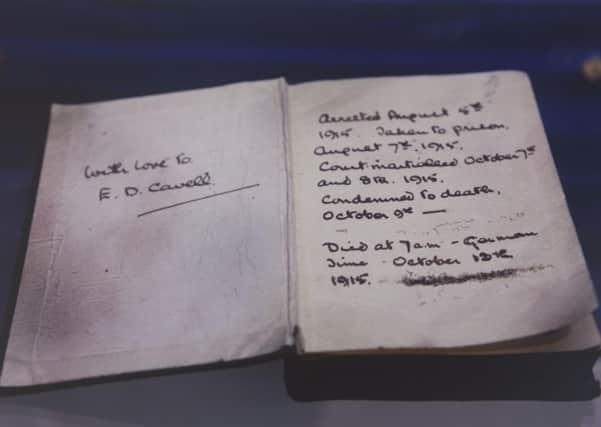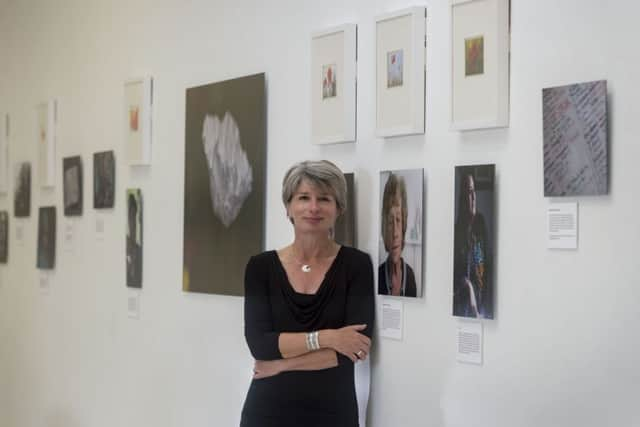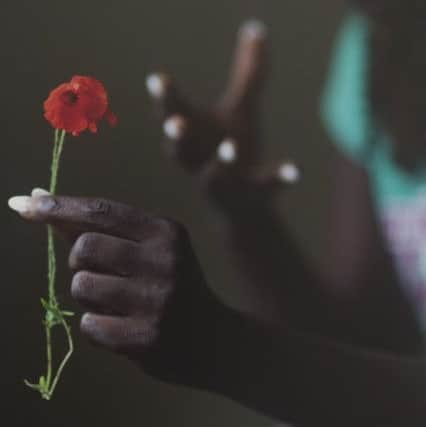The forgotten women of War: an exhibition by Hull-born photojournalist


But on Remembrance Day barely a mention is given to the woman who breathed life into the mighty poppy tradition it is today.
Hull-born photojournalist Dr Lee Karen Stow had been photographing poppies in the fields when a colleague suggested she look up the poppy’s history.
Advertisement
Hide AdAdvertisement
Hide AdIt has taken her on a voyage of discovery, which in its course has revealed the many forgotten women of war.


Portraits of women, including 93-year-old Hull Land Army Girl Iris Newbould and Leeds peace campaigner Lindis Percy, feature in her exhibition Poppies: Women, War, Peace, which opened at the University of Hull’s Brynmor Library today.
The exhibition attracted more than 500,000 visitors when it was shown in Liverpool and it will wind up in Georgia, USA, in 2018, where the middle-aged school teacher and largely-forgotten “Poppy Lady” Moina Michael once lived and worked.
In 1918 Miss Michael was a volunteer for the YMCA in New York and hoping to do relief work in France when she read John McCrae’s immendsely popular poem In Flanders Field. The words struck a chord and she pledged herself to “keep the faith and always wear a poppy” going out and buying two dozen silk poppies, pinning one to her cloak and handing out the rest.
Advertisement
Hide AdAdvertisement
Hide AdThe project came at a devastating time for Lee, who was caring for her parents, who later died within months of each other. Having worked internationally, spending a lot of time in Sierra Leone with women trying to rebuild their lives after the Civil War, her world shrank to a six-mile radius as she stayed home to look after them. “I was in the field photographing poppies and trying to make sense of Sierra Leone and these two people who were disappearing before my eyes,” she said.


Her work has taken to Nagasaki to photograph Reiko Hada, 79, who survived the 1945 atomic bombing. Her lovely, smiling face still recalls the nine-year-old she was when her world went “completely white.”
“She says ‘I am going to keep telling the world what happened until I can’t do it any more’,” said Dr Stow. Many of the stories are of overcoming the odds and the strange twists and turns life takes. Francess Ngaboh-Smart who is now working for the UN was 15, when her village was attacked. “She saw a neighbour decapitated,” says Lee. “She now has a job working for the UN in the Hague, the City of Peace, it just sums up the madness of war.”
Stories of war and suffering are never far away. Lee had never asked her own mother Maureen about her experiences of the Hull Blitz, how she would cower under the table as bombs rained down. “‘You never told me,’ I said. ‘You never asked,’ she replied. Every time I give a talk there is someone with an experience, and that’s what really bought it home to me, it’s not just on the TV.” There’s an opportunity to meet the artist on July 28, where she will present some of her new work for 2018. The exhibition runs until August 19.